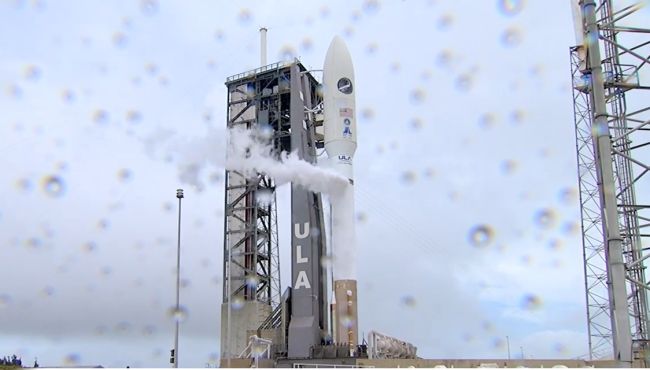
The U.S. Space Force’s next secret mission of a robotic X-37B space plane has been delayed at least 24 hours after bad weather thwarted a launch attempt today (May 16).
An Atlas V rocket was scheduled to launch the X-37B from a pad at the Cape Canaveral Air Force Station in Florida during a two-hour window this morning. But high winds, thick clouds and rain made liftoff impossible, according to launch provider United Launch Alliance (ULA).
“Darn weather. See you tomorrow,” ULA CEO Tory Bruno wrote on Twitter after the launch scrub. “Going to need everyone to focus on those calm, clear thoughts even harder.”
The next launch try for the Space Force will occur Sunday, May 17, at 9:14 a.m. EDT (1314 GMT). The U.S. Air Force’s 45th Space Wing forecasts an 80% chance of good weather at launch time on Sunday. That’s a far cry from the dismal 20% chance the mission had today.
You can watch the X-37B launch live here and on Space.com’s homepage beginning at about 9 a.m. EDT (1300 GMT). You can also watch the launch here directly from ULA.
The X-37B is an unpiloted long-duration spacecraft that flies classified missions for the U.S. military which can last months, and sometimes years. Each X-37B is powered by a solar array tucked inside a payload bay about the size of a pickup truck bed.
The Space Force and Air Force have two X-37B space planes, both built by Boeing. The winged spacecraft are reusable, resemble a smaller version of NASA’s space shuttles and can land themselves. Together, the two vehicles have flown five missions since 2010, spending a cumulative 2,865 days in orbit.
While the exact details of the X-37B’s upcoming mission, called OTV-6, are classified, the spacecraft is known to be carrying two NASA space environment experiments, a small FalconSat-8 satellite built by the Air Force Academy and a novel solar power-beaming experiment from the Naval Research Laboratory. The spacecraft also has a new service module to support those experiments.
Saturday’s launch delay for X-37B will have a ripple effect for mission schedules in Florida’s Space Coast. SpaceX was targeted a Sunday launch a Falcon 9 rocket from Space Launch Complex 40 at the Cape Canaveral Air Force Station (just next door to X-37B’s Atlas V pad), but must wait until after the Space Force launch is complete.
That SpaceX Falcon 9 is carrying 60 new Starlink internet communications satellites for the company’s growing megaconstellation. That launch will now launch no earlier than Monday, May 18, at 3:32 a.m. EDT (0732 GMT), pending the X-37B launch and weather conditions.
Editor’s note: Visit Space.com Sunday, May 17, for live coverage of the X-37B OTV-6 launch, beginning at 8 a.m. EDT (1200 GMT).